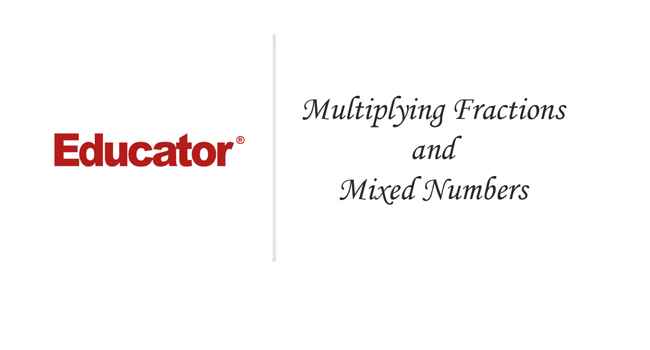Click video to play

This is a quick preview of the lesson. For full access, please Log In or Sign up.
For more information, please see full course syllabus of Basic Math
For more information, please see full course syllabus of Basic Math
Basic Math Multiplying Fractions and Mixed Numbers
Lecture Description
In this lesson our instructor talks about multiplying fractions and mixed numbers. She explains the first step which is to change mixed numbers to improper fractions. The next step is the multiply the numerators together. The last step is to multiply the denominators together. Four extra example videos round up this lesson.
Bookmark & Share
Embed
Share this knowledge with your friends!
Copy & Paste this embed code into your website’s HTML
Please ensure that your website editor is in text mode when you paste the code.(In Wordpress, the mode button is on the top right corner.)
×
Since this lesson is not free, only the preview will appear on your website.
- - Allow users to view the embedded video in full-size.
Next Lecture
Previous Lecture










































 Answer Engine
Answer Engine



1 answer
Last reply by: SIMON XENITELLIS
Mon Jun 24, 2019 7:04 AM
Post by SIMON XENITELLIS on June 24, 2019
The last example 14/15*10/3 is wrong.The teacher accidentally forgot that 15 reduces to 5,
0 answers
Post by Rose A on February 24, 2017
Hello Mary,
In example 3, you said we can divide 203/72... We end up with a decimal... Can you explain what to do than? you said how many left overs becomes your numerator, well when you divide you get 2.81...
Thanks!
0 answers
Post by Karina Herrera on December 29, 2016
Another great lesson! Thanks to you, I am now understanding cross-canceling. It is really going to come in handy.
0 answers
Post by faisal madar on November 12, 2013
cant show it better look at us
0 answers
Post by Pasi Matalamäki on July 30, 2013
It would of been nice if you had explained cross cancelation of fractions
0 answers
Post by judy lee on August 19, 2011
Try dividing 600 wth 28, then you will get 150/7.
3 answers
Last reply by: faisal madar
Tue Nov 12, 2013 5:47 PM
Post by javier mancha on August 15, 2011
you say we can multiply , 24 our numerator x,s 25 and get our answer, which equels, 600, , . then you go on to say,, or we can , cross cancel any numbers, . which is a total diffrent answer from 600. on the second example